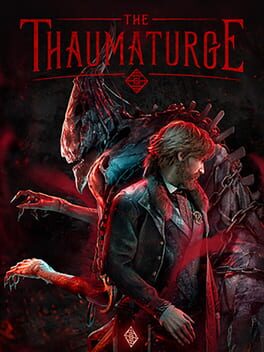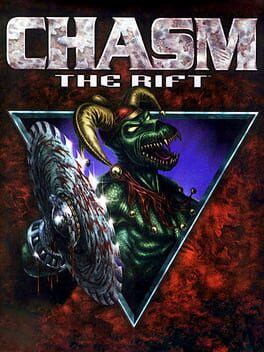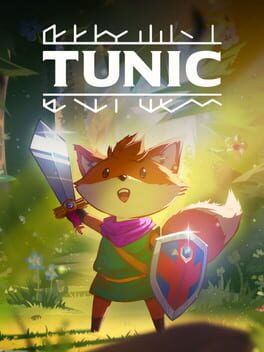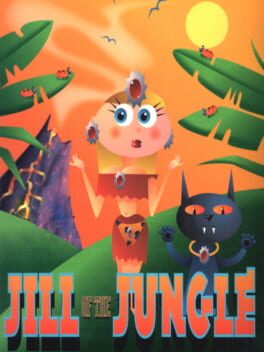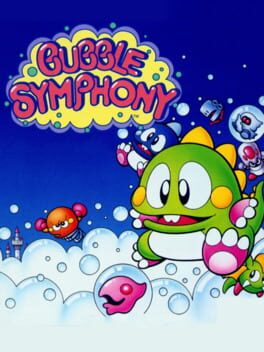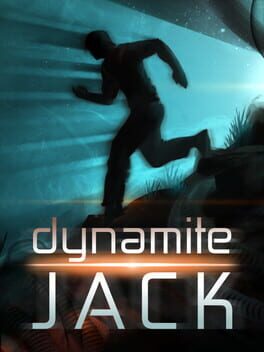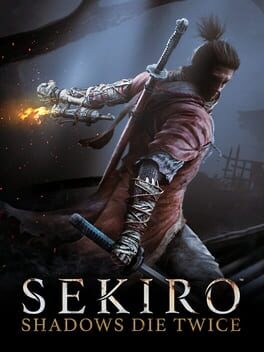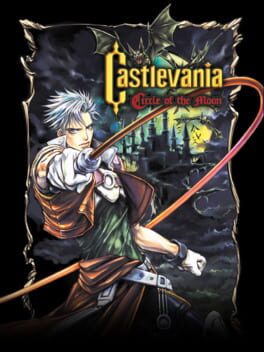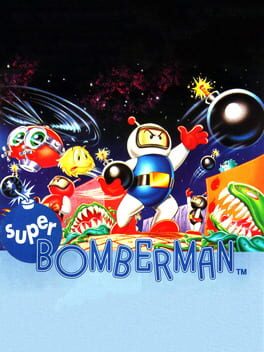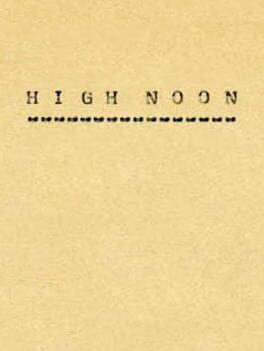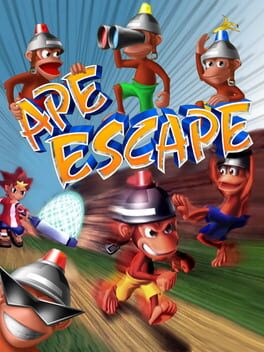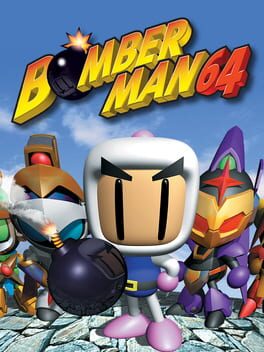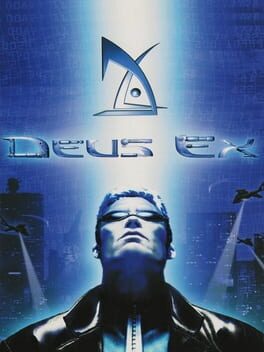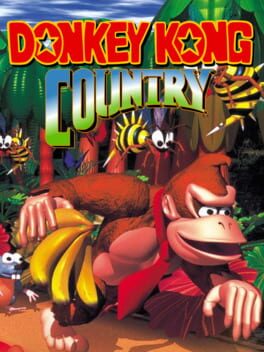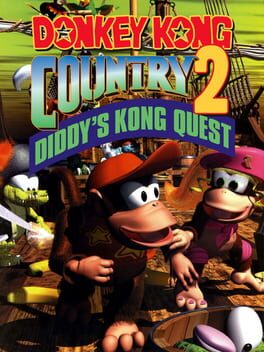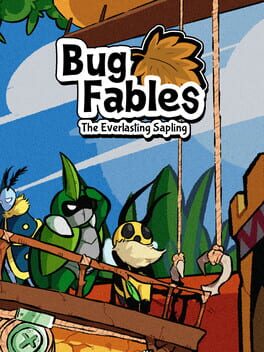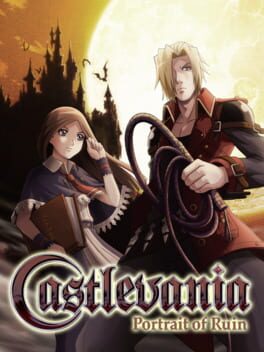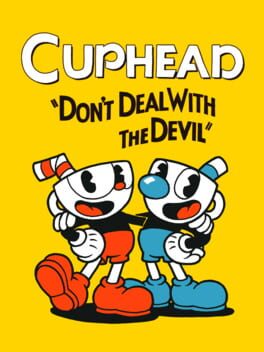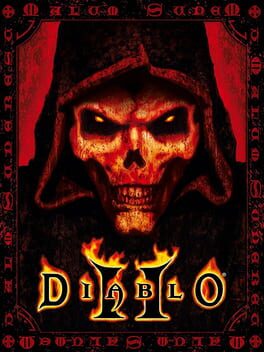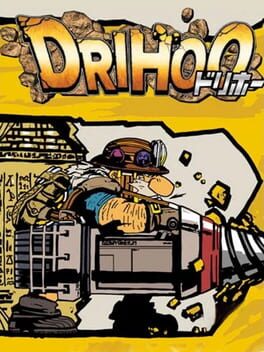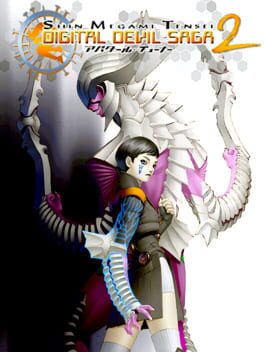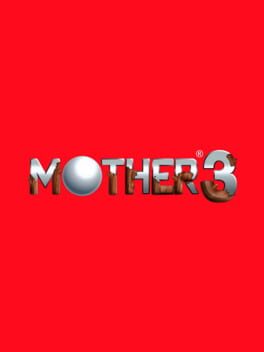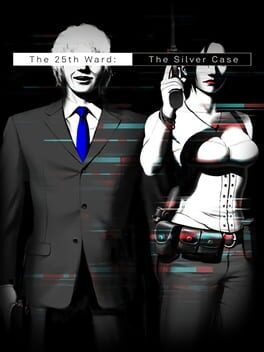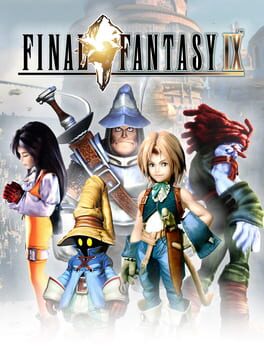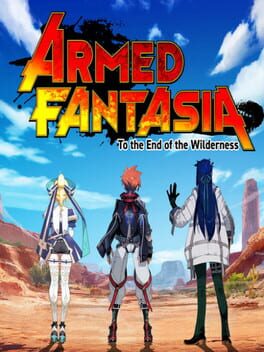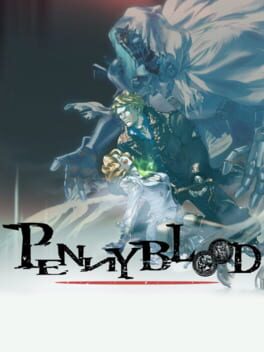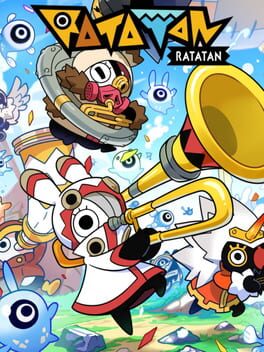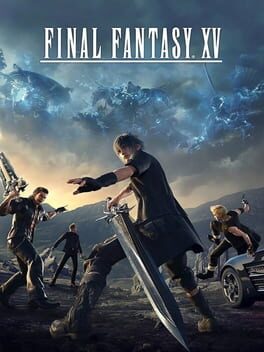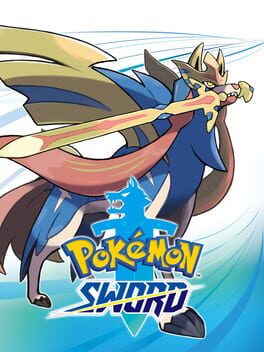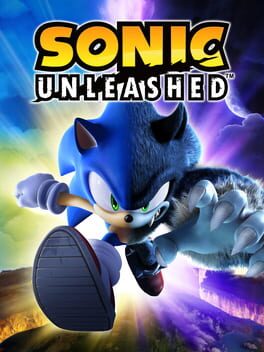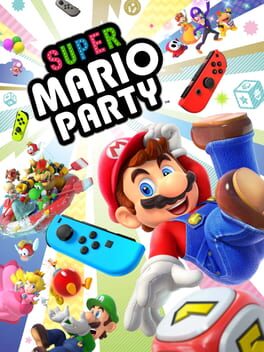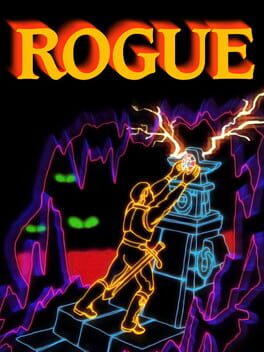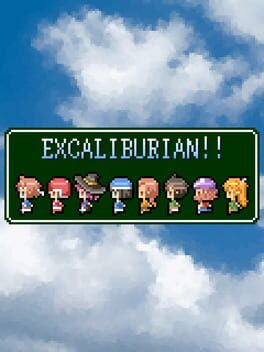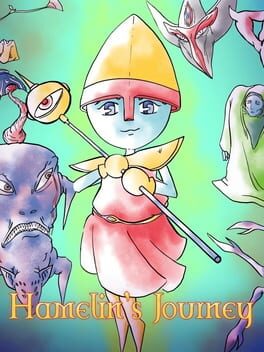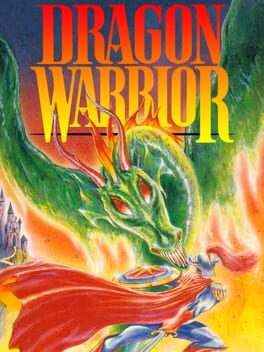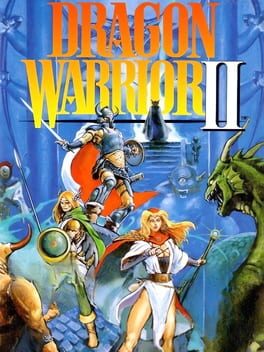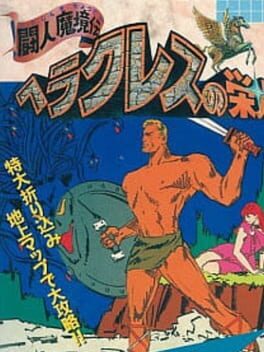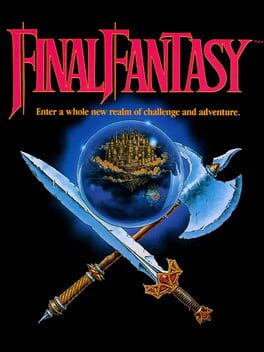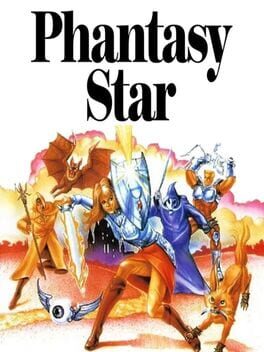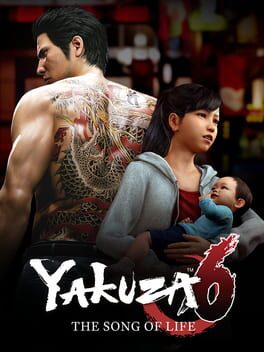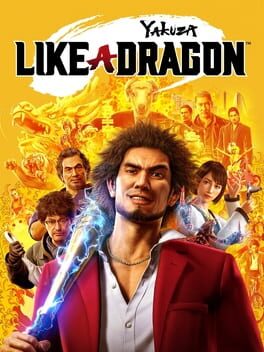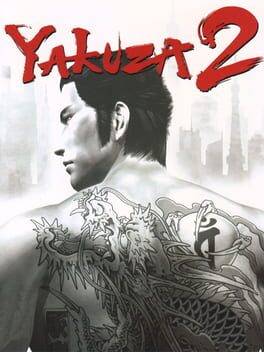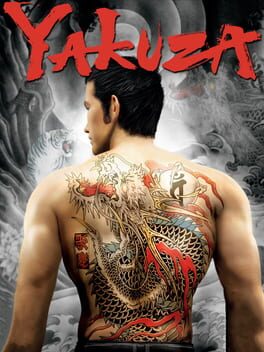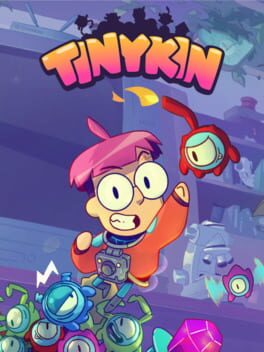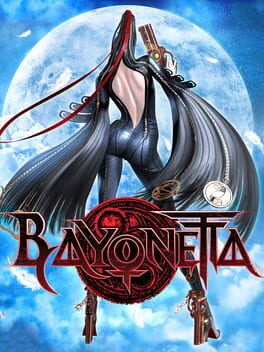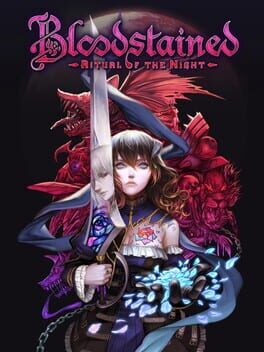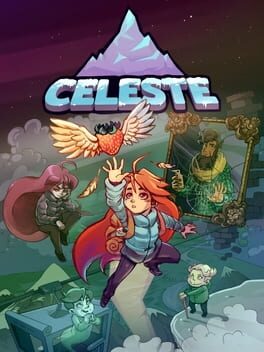3197 reviews liked by conman
The Thaumaturge
2024
What a disappointment - I was really excited for this game. Unfortunately, the gameplay completely ruined the experience for me. The immersion into early 20th-century Poland in the Russian partitian was easy to focus on over the gameplay until the dialogue tried to fit in quirky modern gaming references... ugh.
Anyways, I thought it was insanely cool to see a game not BASED around early 20th century Eastern Europe, but actually SET in the area and time itself. I thought it was insanely cool that it seemed to follow SMT in a way with the ability to collect + fight with different demons from the area. I am a big fan of SMT and a big fan of Eastern European history, I thought this game would be a natural 5/5 for me! The story and setting are amazing. I loved the historical humor, I loved seeing the mixing of so many different cultures (something I rarely seen mentioned in the West when talking about Eastern Europe), and I love-love-loved gathering my demons and seeing which they would give me next... especially since a good chunk were from Slavic Paganism.
As much as I enjoyed these aspects, the lows of the game are just too low, to the point that I was dreading turning it back on and playing through. The fight sequences are awful, I don't know if I was doing it wrong, but they're painfully slow and very tedious. You never get a move that lets you attack everyone at once, instead forcing you to attack one-by-one. There's never an attack you can do that one shots people either. I mostly started focusing on just making them lose their sanity and hitting them then, or by draining them with a move Wiktor has that has the enemy slowly lose HP each round, and then hitting them with the demon they're weakest to. I dunno, I really started to dread getting into fights, which is a big part of the gameplay. The other part of the gameplay I was fine with, but that's all I could get myself to reach, just being fine with it. That part is finding clues to fight your next enemy. You simply right click to see what's around you to investigate, and then move to the next part in the map to continue doing the same until eventually you reach the group you need to fight. It's my least favorite adventure game form! Just go from point A to point B to point C until you reach a boss fight. Rinse and repeat. The involvement of the Polish Revolution is super interesting, but when you go to do things involving the culture, they don't show you the area, they often just draw you a picture of what the cultural event was; such as telescope viewing, cola tasting, or even visiting a gentleman's club. It's a small complaint, but it bothered me... totally not because I was so excited to see that Gentleman's Club! But it's okay, your character goes to a very depressing brothal later LOL. Later in the game, they also start adding in modern gaming references such as saying "I gotta catch them all!" - it was super awkward, I really didn't like it.
I would say you should check out this game if you're interested in the history, but I had a better time just reading a history book. The gameplay just hit all my pet-peeves and then some, even with the gorgeous (AA) graphics. I unfortunately couldn't bring myself to finish it because of these issues. Check it out if you'd like, otherwise I would recommend playing an SMT game or reading a book on the 1905 Polish Revolution... I think I might go pick up one myself.
2/5
Anyways, I thought it was insanely cool to see a game not BASED around early 20th century Eastern Europe, but actually SET in the area and time itself. I thought it was insanely cool that it seemed to follow SMT in a way with the ability to collect + fight with different demons from the area. I am a big fan of SMT and a big fan of Eastern European history, I thought this game would be a natural 5/5 for me! The story and setting are amazing. I loved the historical humor, I loved seeing the mixing of so many different cultures (something I rarely seen mentioned in the West when talking about Eastern Europe), and I love-love-loved gathering my demons and seeing which they would give me next... especially since a good chunk were from Slavic Paganism.
As much as I enjoyed these aspects, the lows of the game are just too low, to the point that I was dreading turning it back on and playing through. The fight sequences are awful, I don't know if I was doing it wrong, but they're painfully slow and very tedious. You never get a move that lets you attack everyone at once, instead forcing you to attack one-by-one. There's never an attack you can do that one shots people either. I mostly started focusing on just making them lose their sanity and hitting them then, or by draining them with a move Wiktor has that has the enemy slowly lose HP each round, and then hitting them with the demon they're weakest to. I dunno, I really started to dread getting into fights, which is a big part of the gameplay. The other part of the gameplay I was fine with, but that's all I could get myself to reach, just being fine with it. That part is finding clues to fight your next enemy. You simply right click to see what's around you to investigate, and then move to the next part in the map to continue doing the same until eventually you reach the group you need to fight. It's my least favorite adventure game form! Just go from point A to point B to point C until you reach a boss fight. Rinse and repeat. The involvement of the Polish Revolution is super interesting, but when you go to do things involving the culture, they don't show you the area, they often just draw you a picture of what the cultural event was; such as telescope viewing, cola tasting, or even visiting a gentleman's club. It's a small complaint, but it bothered me... totally not because I was so excited to see that Gentleman's Club! But it's okay, your character goes to a very depressing brothal later LOL. Later in the game, they also start adding in modern gaming references such as saying "I gotta catch them all!" - it was super awkward, I really didn't like it.
I would say you should check out this game if you're interested in the history, but I had a better time just reading a history book. The gameplay just hit all my pet-peeves and then some, even with the gorgeous (AA) graphics. I unfortunately couldn't bring myself to finish it because of these issues. Check it out if you'd like, otherwise I would recommend playing an SMT game or reading a book on the 1905 Polish Revolution... I think I might go pick up one myself.
2/5
Chasm: The Rift
1997
very competent, but not much else. on one hand i appreciate the high-tension, almost dungeon-crawl nature of the levels. you're trained very early on to understand that every corner, item pickup, hell - even secret room is liable to be a deathtrap. kinda reminds me more of a 2000s shooter than a boomer one with its slower pace, which i'm not opposed to
on the other hand... every enemy being a sponge gets pretty fucking tiring at points and resultantly your weapons tend to feel like peashooters (especially against anything running on all fours). there's limb dismemberment, which sells the overwhelming strength that some monsters clearly hold over you - and it can be used to literally disarm the especially tanky ones - but also feels a little undercooked as it's usually a better idea to just shoot someone's head off anyway
level design's a mixed bag. i'm not a fan of the whole "take a wild guess and shoot a hole in the wall" philosophy, but none of the 'puzzles' are too out there to figure out. environments kinda suck though. i found myself enjoying the quake knockoff-y industrial areas the most and really, really was not too fond of episode 2's bland egypt theme (or its shitty platforming). definitely not much of a looker overall
it's pretty clear why some people love this game and some hate it. the generic setup is made a hell of a lot more standout by its relentlessly troll-heavy design, but if you're not a fan of that then there's probably nothing here for you
if chasm: the rift were a person it'd be this scandinavian guy i knew when i was 13 who frequented 4chan and constantly veiled himself in irony as a substitute for personality
on the other hand... every enemy being a sponge gets pretty fucking tiring at points and resultantly your weapons tend to feel like peashooters (especially against anything running on all fours). there's limb dismemberment, which sells the overwhelming strength that some monsters clearly hold over you - and it can be used to literally disarm the especially tanky ones - but also feels a little undercooked as it's usually a better idea to just shoot someone's head off anyway
level design's a mixed bag. i'm not a fan of the whole "take a wild guess and shoot a hole in the wall" philosophy, but none of the 'puzzles' are too out there to figure out. environments kinda suck though. i found myself enjoying the quake knockoff-y industrial areas the most and really, really was not too fond of episode 2's bland egypt theme (or its shitty platforming). definitely not much of a looker overall
it's pretty clear why some people love this game and some hate it. the generic setup is made a hell of a lot more standout by its relentlessly troll-heavy design, but if you're not a fan of that then there's probably nothing here for you
if chasm: the rift were a person it'd be this scandinavian guy i knew when i was 13 who frequented 4chan and constantly veiled himself in irony as a substitute for personality
Tunic
2022
My friend said he was going to buy me Balan Wonderworld but hit me with this instead, so if it's a trick or a pleasant surprise that's for you to decide.
Tunic has some really interesting ideas that, should you dare go for completion, will really demand you work your brain for it. I think the Instruction Manual is a brilliant concept that cutely made and several times as I flipped through it I thought "damn, they're probably selling this for money they'd make a killing". I got the standard ending because eventually the demand for guessing what you input at the secret input spots for so many puzzles got too much for me (I likely would have been more interested had I known earlier, but I only found out near the end of the game). Mid-Late game collecting the keys and the dungeon after was where it peaked for me, unraveling more of the world as I explore and clear dungeons, now that's my kinda game.
I also think the bosses are pretty fun, the Librarian getting a special shoutout. Some bosses like the final boss and Scavanger Boss can get stuck in a loop trying to dodge as they're against the wall which lets you combo a good amount before they get unstuck. Combat is all around solid although not knowing what items did kept me from experimenting with a few of them.
If you have a giga brain (or a cheater but that goes against the spirit of the game) you'll enjoy the puzzles, if you have an average brain like me I think going for the standard ending is sufficient enough, even if the endings felt a little simple. Better than Balan most likely as I can see me genuinely recommending this to some people.
Tunic has some really interesting ideas that, should you dare go for completion, will really demand you work your brain for it. I think the Instruction Manual is a brilliant concept that cutely made and several times as I flipped through it I thought "damn, they're probably selling this for money they'd make a killing". I got the standard ending because eventually the demand for guessing what you input at the secret input spots for so many puzzles got too much for me (I likely would have been more interested had I known earlier, but I only found out near the end of the game). Mid-Late game collecting the keys and the dungeon after was where it peaked for me, unraveling more of the world as I explore and clear dungeons, now that's my kinda game.
I also think the bosses are pretty fun, the Librarian getting a special shoutout. Some bosses like the final boss and Scavanger Boss can get stuck in a loop trying to dodge as they're against the wall which lets you combo a good amount before they get unstuck. Combat is all around solid although not knowing what items did kept me from experimenting with a few of them.
If you have a giga brain (or a cheater but that goes against the spirit of the game) you'll enjoy the puzzles, if you have an average brain like me I think going for the standard ending is sufficient enough, even if the endings felt a little simple. Better than Balan most likely as I can see me genuinely recommending this to some people.
Jill of the Jungle
1992
There's nothing more damning you can say about Jill of the Jungle as a platformer than to note that Sonic the Hedgehog 2 came out the same year. And yet.
This is a bit of gaming history that is difficult to explain. You're young. Maybe your dad has a computer, maybe you have an aging computer lab at school. PCs are different beasts, expensive, a world apart. And this game, it's shareware. It's fine, completely legal, to pass it out on floppy disks. Encouraged, even. So you play it at school, or on your dad's computer in his den, or at a friends' house before bringing home a copy. It's clunkier than Mario, slower than Sonic. But it's available.
And there's a certain charm. A young Tim Sweeney, establishing a second hit for Epic Megagames after ZZT. Cocksure, arrogant, taunting other game franchises within the confines of this sophomore success by… picking up apples that provide news bulletins? The game croons "YEEAAAH" when you pick up a key, a guitar riff for those apples. Throwing a dagger next to a wall makes a record scratch. The sound test mocks its own contents as terrible. It's odd, unfiltered, the work of a young man.
More's the charm. There's nothing outstanding about Jill of the Jungle, but there's plenty to love. The jump animation that faces the screen, the excellent run cycle, one-off transformations, confident declarations on a wall that an upcoming section is tricky. It's amateur, earnest, easy and forgivable for its faults because its archaic contents are presented with an excess of bluster and, perhaps, a bit of actual panache.
This is a bit of gaming history that is difficult to explain. You're young. Maybe your dad has a computer, maybe you have an aging computer lab at school. PCs are different beasts, expensive, a world apart. And this game, it's shareware. It's fine, completely legal, to pass it out on floppy disks. Encouraged, even. So you play it at school, or on your dad's computer in his den, or at a friends' house before bringing home a copy. It's clunkier than Mario, slower than Sonic. But it's available.
And there's a certain charm. A young Tim Sweeney, establishing a second hit for Epic Megagames after ZZT. Cocksure, arrogant, taunting other game franchises within the confines of this sophomore success by… picking up apples that provide news bulletins? The game croons "YEEAAAH" when you pick up a key, a guitar riff for those apples. Throwing a dagger next to a wall makes a record scratch. The sound test mocks its own contents as terrible. It's odd, unfiltered, the work of a young man.
More's the charm. There's nothing outstanding about Jill of the Jungle, but there's plenty to love. The jump animation that faces the screen, the excellent run cycle, one-off transformations, confident declarations on a wall that an upcoming section is tricky. It's amateur, earnest, easy and forgivable for its faults because its archaic contents are presented with an excess of bluster and, perhaps, a bit of actual panache.
Bubble Symphony
1994
Well, after taking a brief detour into the spin-off world of this franchise with a surprisingly great puzzle game, I think it’s about time that I stepped back into the proper set of Bubble Bobble games. For every single one of these games that I had reviewed before, I had already had prior knowledge of them from previous playthroughs I did in the past, but from here on out, everything is gonna be brand new for me, so I am curious to see how exactly Taito manages to evolve this franchise over the next few entries, while also hopefully trying to not destroy it in the process. But of course, because consistency is a myth, we have yet another confusing entry in the series that calls itself Bubble Bobble II, which is not only supposed to be a sequel to the original game, it also apparently takes place after the events of Parasol Stars. I would question this, but I think the best way to approach this series’s continuity is how one should approach the Zelda timeline: pretending it doesn’t exist. So, I managed to do that and have a good ol’ time with the game in question, Bubble Symphony.
Like I mentioned before, I had never played this particular entry in the series before, but I was pretty excited to check it out for several reasons, primarily because this was gonna be the first time that I was gonna be playing the arcade versions of one of these games. Not to say that the other versions of the previous games were bad, but it is clear from what I have heard that the arcade versions are the true versions of these games, so I was ready to go in and fully see one of these games in their full, intended glory. So now that I have played one of these games in their full intended glory, I can certainly say that… it’s a Bubble Bobble game alright, but that’s not a bad thing in this case. It still manages to be a great game, giving fans plenty of what they love about this franchise, while bringing in some changes and nice surprises to make you want to see everything this game has to offer.
The story is appropriately simple for this franchise, where four kids named Bubblun, Bobblun, Kululun, and Cororon are having a good time reading some books like model citizens, but while doing so, they inadvertently unleash the evil Hyper Drunk into the world, who turns them into dragons and sent into another world, so it is up to the four of them to find their way back home, defeat Hyper Drunk, and find a way to return back to normal, which is not only a good enough plot for one of these games, but it also proves just how dangerous books can be, so thank god something showed us the truth. The graphics are pretty great, not only being as bright, colorful, and energetic as you could ever want, but also having great designs for all of the characters, enemies, and bosses that make the game a joy to look at, the music is pretty good, once again not having too many tracks, and the ones that are there are played over and over again, but they are good tracks to listen to, even if they aren’t as catchy as the classic tunes, and the gameplay/control is almost identical to that of previous Bubble Bobble games, with a few twists and turns here or there, so fans and newcomers alike should be able to jump in and have a good time with it immediately.
The game is a 2D platformer, where you take control of one of the four kids that I mentioned earlier, go through many different levels spanning across many different worlds, shoot many enemies in the face with your unlimited supply of bubbles so that you can pop them out of existence and collect their remains in the form of delicious fruits and other various items, gather plenty of different power ups and items which can not only change what your bubbles can do, but also give you temporary boosts and lead towards getting the best ending of the game, and take on several bosses that will give you a hard time if you aren’t rapid-firing your bubble power like crazy at them to take them out really quickly. Anyone who has played Bubble Bobble before this will be able to understand pretty much everything this game is doing, as there aren’t really any huge changes to the formula to shake things up, but not only is the main gameplay still fun enough to where you don’t care too much about that, but also the game has a touch of personality and charm that none of the games previously have managed to match, even if very close.
Given how this is meant to be a sequel to the original Bubble Bobble, it does implement some things that weren’t present in that game originally, such as with the inclusion of more power ups to mess around with and more bosses to fight, and while none of these are anything too new to the franchise as a whole, the way they are implemented in this game does feel pretty natural and very fun to experience. It feels like this is the proper evolution of the original title, not needing to completely reinvent the main gameplay or change up any of the characters and scenarios, which definitely helps it out a lot more in the end. Not to mention, the core elements of the original game that are brought back here are vastly improved upon, such as with the playable characters, with there being not only more options to choose from, but each one is distinct from each other, having their own attribute to take advantage of, which is pretty neat, and does allow for a lot of experimentation to see which kind of playstyle suits you best, even if I just mainly stuck with Bubblun for most of the journey.
Much like in the typical Bubble Bobble fashion, the game also has a lot of things to do and see, having many different worlds to see and levels to beat, while also having a ton of replay value as well. After beating each world, you are given the choice of what different world you want to go to next, with there being specific paths you can take that will lead to several different endings, encouraging you to replay the game to take different routes to see what else you can find. Not to mention, each of the worlds have unique themes to them, such as the generic ones like a dessert-themed world and a toy-themed world, or eve ones that are based on other Taito properties, like Space Invaders and Kiki KaiKai (Pocky & Rocky? What the fuck is that?). It is really weird to see these kinds of worlds in this world, but at the same time, my huge-ass smile signifies how much I like them, and the game wouldn’t be as great if they weren’t in there at all.
If none of that bubbles your bobble though (I am so sorry), then there probably won’t be much else here to win you over if you weren’t into the other games. Most of it is your typical Bubble Bobble affair, where ya blow bubbles, ya pop enemies, they turn into weird objects, and you question what drugs you took before turning on the game: we all know how this goes at this point. Even if you ignore that though, there are still those elements that I, a true Bubble Bobbler at heart, still am not a fan of, such as the fact that you need to find all of these separate objects in order to get the true ending. While it isn’t as cryptic as the original game, it is random enough to where it can be a pain at times, especially since you are always on a time limit, and I don’t want that whale ghost to bubble my bobble at all.
Overall, despite not that much change and some elements of the franchise being here that I just want to leave me alone, this was still yet another great entry in this great series, full with enough energy and adorable vibes that makes me wanna keep playing, plenty for you to do and see, and small changes that do the job at making this feel like a true sequel to the original, despite all the other follow-ups that came beforehand. I would definitely recommend it for those who are big fans of the series, or for those who have never played this series before, because even if the game is a little more obscure than others, it is a great place to start, and I’m sure you’ll have a great time with it, even with a friend right alongside you. And since I can’t think of any joke to end this review off of, I guess I will make a promise to you all that, from this point on, I will never EVER make a “bubble your bobble” joke again. Probably already lost enough followers as is just from that joke, no need to keep bobbling it up like that.
Game #558
Like I mentioned before, I had never played this particular entry in the series before, but I was pretty excited to check it out for several reasons, primarily because this was gonna be the first time that I was gonna be playing the arcade versions of one of these games. Not to say that the other versions of the previous games were bad, but it is clear from what I have heard that the arcade versions are the true versions of these games, so I was ready to go in and fully see one of these games in their full, intended glory. So now that I have played one of these games in their full intended glory, I can certainly say that… it’s a Bubble Bobble game alright, but that’s not a bad thing in this case. It still manages to be a great game, giving fans plenty of what they love about this franchise, while bringing in some changes and nice surprises to make you want to see everything this game has to offer.
The story is appropriately simple for this franchise, where four kids named Bubblun, Bobblun, Kululun, and Cororon are having a good time reading some books like model citizens, but while doing so, they inadvertently unleash the evil Hyper Drunk into the world, who turns them into dragons and sent into another world, so it is up to the four of them to find their way back home, defeat Hyper Drunk, and find a way to return back to normal, which is not only a good enough plot for one of these games, but it also proves just how dangerous books can be, so thank god something showed us the truth. The graphics are pretty great, not only being as bright, colorful, and energetic as you could ever want, but also having great designs for all of the characters, enemies, and bosses that make the game a joy to look at, the music is pretty good, once again not having too many tracks, and the ones that are there are played over and over again, but they are good tracks to listen to, even if they aren’t as catchy as the classic tunes, and the gameplay/control is almost identical to that of previous Bubble Bobble games, with a few twists and turns here or there, so fans and newcomers alike should be able to jump in and have a good time with it immediately.
The game is a 2D platformer, where you take control of one of the four kids that I mentioned earlier, go through many different levels spanning across many different worlds, shoot many enemies in the face with your unlimited supply of bubbles so that you can pop them out of existence and collect their remains in the form of delicious fruits and other various items, gather plenty of different power ups and items which can not only change what your bubbles can do, but also give you temporary boosts and lead towards getting the best ending of the game, and take on several bosses that will give you a hard time if you aren’t rapid-firing your bubble power like crazy at them to take them out really quickly. Anyone who has played Bubble Bobble before this will be able to understand pretty much everything this game is doing, as there aren’t really any huge changes to the formula to shake things up, but not only is the main gameplay still fun enough to where you don’t care too much about that, but also the game has a touch of personality and charm that none of the games previously have managed to match, even if very close.
Given how this is meant to be a sequel to the original Bubble Bobble, it does implement some things that weren’t present in that game originally, such as with the inclusion of more power ups to mess around with and more bosses to fight, and while none of these are anything too new to the franchise as a whole, the way they are implemented in this game does feel pretty natural and very fun to experience. It feels like this is the proper evolution of the original title, not needing to completely reinvent the main gameplay or change up any of the characters and scenarios, which definitely helps it out a lot more in the end. Not to mention, the core elements of the original game that are brought back here are vastly improved upon, such as with the playable characters, with there being not only more options to choose from, but each one is distinct from each other, having their own attribute to take advantage of, which is pretty neat, and does allow for a lot of experimentation to see which kind of playstyle suits you best, even if I just mainly stuck with Bubblun for most of the journey.
Much like in the typical Bubble Bobble fashion, the game also has a lot of things to do and see, having many different worlds to see and levels to beat, while also having a ton of replay value as well. After beating each world, you are given the choice of what different world you want to go to next, with there being specific paths you can take that will lead to several different endings, encouraging you to replay the game to take different routes to see what else you can find. Not to mention, each of the worlds have unique themes to them, such as the generic ones like a dessert-themed world and a toy-themed world, or eve ones that are based on other Taito properties, like Space Invaders and Kiki KaiKai (Pocky & Rocky? What the fuck is that?). It is really weird to see these kinds of worlds in this world, but at the same time, my huge-ass smile signifies how much I like them, and the game wouldn’t be as great if they weren’t in there at all.
If none of that bubbles your bobble though (I am so sorry), then there probably won’t be much else here to win you over if you weren’t into the other games. Most of it is your typical Bubble Bobble affair, where ya blow bubbles, ya pop enemies, they turn into weird objects, and you question what drugs you took before turning on the game: we all know how this goes at this point. Even if you ignore that though, there are still those elements that I, a true Bubble Bobbler at heart, still am not a fan of, such as the fact that you need to find all of these separate objects in order to get the true ending. While it isn’t as cryptic as the original game, it is random enough to where it can be a pain at times, especially since you are always on a time limit, and I don’t want that whale ghost to bubble my bobble at all.
Overall, despite not that much change and some elements of the franchise being here that I just want to leave me alone, this was still yet another great entry in this great series, full with enough energy and adorable vibes that makes me wanna keep playing, plenty for you to do and see, and small changes that do the job at making this feel like a true sequel to the original, despite all the other follow-ups that came beforehand. I would definitely recommend it for those who are big fans of the series, or for those who have never played this series before, because even if the game is a little more obscure than others, it is a great place to start, and I’m sure you’ll have a great time with it, even with a friend right alongside you. And since I can’t think of any joke to end this review off of, I guess I will make a promise to you all that, from this point on, I will never EVER make a “bubble your bobble” joke again. Probably already lost enough followers as is just from that joke, no need to keep bobbling it up like that.
Game #558
Dynamite Jack
2012
I get it. You see a game that's top down, destructible terrain, manually detonated bombs. That'sBomberman, right? Wrong.
This is Chip's Challenge, Stealth Edition.
And what's here works reasonably well. It's a slow start, for sure, and the game as a whole is distinctly a bit underbaked. Achievement sets for each level are nice, but the lack of one for accomplishing all of these optional objectives in one go is notably missing. There's speed-based leaderboards bolstered by collectibles that shave seconds off your time, but those collectibles are only found on one map in each area. There are achievements for killing all guards on a map, but that is always much easier than the pacifist runs. And so on.
The game is short, though, and has that distinct charm of a successful 2012 Ludum Dare project. A sequel would have been ideal, a game that learns its lessons and implements them from step one. But I had a good enough time to do almost every optional achievement, to collect all the collectables. The amateur presentation, the genuine hype over the music change in the last area, the charm of seeing one guy and some friends basically doing the best they can because they love video games and a proper dev shot at the end of the credits. Good stuff all around, just not great.
This is Chip's Challenge, Stealth Edition.
And what's here works reasonably well. It's a slow start, for sure, and the game as a whole is distinctly a bit underbaked. Achievement sets for each level are nice, but the lack of one for accomplishing all of these optional objectives in one go is notably missing. There's speed-based leaderboards bolstered by collectibles that shave seconds off your time, but those collectibles are only found on one map in each area. There are achievements for killing all guards on a map, but that is always much easier than the pacifist runs. And so on.
The game is short, though, and has that distinct charm of a successful 2012 Ludum Dare project. A sequel would have been ideal, a game that learns its lessons and implements them from step one. But I had a good enough time to do almost every optional achievement, to collect all the collectables. The amateur presentation, the genuine hype over the music change in the last area, the charm of seeing one guy and some friends basically doing the best they can because they love video games and a proper dev shot at the end of the credits. Good stuff all around, just not great.
Sekiro has such a clear vision and style and is trying new things for From Software in a couple of different vectors. This game plays much differently than Dark Souls and the world building and storytelling are also much removed from From's typical approach. I enjoyed my time with it, but it doesn't work for me quite as well overall.
Sekiro is about parrying in a way that no other souls game is. You will have to rewire your Souls habits to succeed here, but a couple of smart decisions make the onramp manageable. Parry windows are extremely generous and failing usually just means you block (which has other negatives). It is a super interesting combat system that I had a good time learning, despite some of the cracks showing by midgame.
Enemies have poise that you parry, deflect, and clash your way through, whereupon you can score an execution, killing them immediately. Bosses take 2 or 3, usually marking specific delineations for their phases. This is a cool reward moment that makes these fights feel like balletic swords duels when it works, clashing back and forth as you learn their attacks and exploit them. Fights like Jinsuke Saze and O'Rin of the Water feel incredible as you learn their attacks and execute them perfectly. Your first attempt will be 5 minutes of healing, defending, and looking for opportunities while your winning attempt will be 30 seconds of attacks, parries, and executions. I haven't gotten quite this feeling of complete mastery from any other Souls game.
This is unfortunately undercut in many fights by the fact that poise regenerates very quickly when an enemy is at full health, so you will spend much of the battle trying to deal vitality damage to them so that you can finally parry them into an execution. It becomes a tedious and rote exploitation of their positioning and movement that simply doesn't work.
Some unclear UX around perilous attacks makes things a bit more frustrating and fiddly than it probably should be which is exacerbated by the camera and lockon system not playing that nicely with multiple enemies (each of which is doing a perilous attack on you, good luck!).
The lack of any particular ability to customize your build gives the game a very intentional feel, but also made me feel locked into playing a particular way that could sometimes be more frustrating than fun.
The negatives weren't quite enough to ruin the game for me. I did cheat my way through the final boss and don't feel bad about it.
Narrative in Sekiro is trying to be more linear and straightforward than other From games and they don't quite deliver. There is a coherent throughline, but a lot of what happens and why is either unclear or based in some lore or actual Japanese history I don't understand. There are side areas, but the progression here feels very linear, with basically one way to go to proceed and a lot of story-based area gating. It is fine for what it is, but trades From's strength (narrative through world-building and inference) for their weakness (narrative through direct linear plotting).
I love the style and look of this game. It has muted visuals punctuated by bold colors and environments that are grounded but extremely surreal. Enemies are all based in Japanese history and myth which gives things an authentic and compelling edge while allowing giant serpents, apes, and monkeys firing rifles to exist believably along with spear wielding samurai and agents of the unexplained "Interior Ministry."
Along with Bloodborne, this probably has the most striking and impressive look of any From game.
I like Sekiro quite a bit, but some of the uneven difficulty, combat system weirdness, and narrative stumbles do mar the experience for me. It is worth playing to see how different this sort of combat can be, but don't feel bad about cheating if things get a bit too frustrating.
Sekiro is about parrying in a way that no other souls game is. You will have to rewire your Souls habits to succeed here, but a couple of smart decisions make the onramp manageable. Parry windows are extremely generous and failing usually just means you block (which has other negatives). It is a super interesting combat system that I had a good time learning, despite some of the cracks showing by midgame.
Enemies have poise that you parry, deflect, and clash your way through, whereupon you can score an execution, killing them immediately. Bosses take 2 or 3, usually marking specific delineations for their phases. This is a cool reward moment that makes these fights feel like balletic swords duels when it works, clashing back and forth as you learn their attacks and exploit them. Fights like Jinsuke Saze and O'Rin of the Water feel incredible as you learn their attacks and execute them perfectly. Your first attempt will be 5 minutes of healing, defending, and looking for opportunities while your winning attempt will be 30 seconds of attacks, parries, and executions. I haven't gotten quite this feeling of complete mastery from any other Souls game.
This is unfortunately undercut in many fights by the fact that poise regenerates very quickly when an enemy is at full health, so you will spend much of the battle trying to deal vitality damage to them so that you can finally parry them into an execution. It becomes a tedious and rote exploitation of their positioning and movement that simply doesn't work.
Some unclear UX around perilous attacks makes things a bit more frustrating and fiddly than it probably should be which is exacerbated by the camera and lockon system not playing that nicely with multiple enemies (each of which is doing a perilous attack on you, good luck!).
The lack of any particular ability to customize your build gives the game a very intentional feel, but also made me feel locked into playing a particular way that could sometimes be more frustrating than fun.
The negatives weren't quite enough to ruin the game for me. I did cheat my way through the final boss and don't feel bad about it.
Narrative in Sekiro is trying to be more linear and straightforward than other From games and they don't quite deliver. There is a coherent throughline, but a lot of what happens and why is either unclear or based in some lore or actual Japanese history I don't understand. There are side areas, but the progression here feels very linear, with basically one way to go to proceed and a lot of story-based area gating. It is fine for what it is, but trades From's strength (narrative through world-building and inference) for their weakness (narrative through direct linear plotting).
I love the style and look of this game. It has muted visuals punctuated by bold colors and environments that are grounded but extremely surreal. Enemies are all based in Japanese history and myth which gives things an authentic and compelling edge while allowing giant serpents, apes, and monkeys firing rifles to exist believably along with spear wielding samurai and agents of the unexplained "Interior Ministry."
Along with Bloodborne, this probably has the most striking and impressive look of any From game.
I like Sekiro quite a bit, but some of the uneven difficulty, combat system weirdness, and narrative stumbles do mar the experience for me. It is worth playing to see how different this sort of combat can be, but don't feel bad about cheating if things get a bit too frustrating.
I'm tired.
Let's play armchair game designer, because lord knows we don't have enough of them on here.
Before you can run, you must walk, and boy does Nathan Graves enjoy walking. Nathan just adores going on a stroll in Camilla's castle while his master's getting his toenails ripped off in preparation for being slaughtered in a satanic ritual. Mr. Graves wouldn't know how to run even if I slapped his dump truck ass with the world's most painful block of wood. It's a godsend that Camilla's basement houses the very shoes he needs to be able to find the joys of exercise again after he forgot how to sprint when Count Dankula played his Trap Hole card in the introduction scene. One must wonder how long it would've taken if Drac's minions didn't make such a fuck up as to leave shoes for Mr. Graves to wear for his aching strolling feet. Even with these shoes Nathan only knows how to barrel forward with wanton disregard for his own being. Alucard had it figured out already, just run with care. That's all you gotta do. For Nathan though? Only two speeds exist. Tortoise, and drunken hare riding on a Kawasaki Ninja.
The input for running in this game is bad enough with requiring me to dash dance on the dpad and kill my thumbs, but Nathan's whip attack is noticeably sluggish compared to past Classicvania outings. It may not be noticeable at first, but try ducking and whipping and go back to playing as Simon in any of the past games and you'll definitely feel it. Nathan can jump like a stiff pong paddle and can even wall jump, and trust me I'm proud of him for being able to do so, but he should stick to his day job. Wall jumping in this is automated for at least two seconds as Nathan pauses on the wall and propels himself into the direction of enemy fire that sends him careening back down the pit that he was trying to make his way up from. You will encounter this scenario a lot, I assure you, especially with Circle of the Moon's obsession with slap dashing Armor enemies everywhere with annoying attacks that can bop you from the other side of the screen. No joke, I had a moment where I thought I was hitting an Ice Armor enemy in the underground waterway safely, only to get a very pleasant surprise in the form of another spear flying from off screen and stabbing me through the adam's apple thanks to the second Ice Armor that was behind him.
The primary system is collecting some shitty Yu-Gi-Oh cards and playing Blackjack with yourself to combine two of them and give yourself some form of power up, which could range from boring effects like your whip getting an elemental bonus, or actual cool shit like turning into a bone-throwing skeleton that dies in one hit. Unfortunately, the card for turning into a glass jawed skeleton is about 95% into the game and requires killing a very specific candle enemy that requires backtracking to a who-gives-a-shit area, and kindly asking it to drop the damn card sometime this week. This is where I get to bitch about the worst part of Circle of the Moon besides Nathan's completely useless movement, and it's the outrageous drop rates. That card that I'd need for the aforementioned skeleton transformation? The drop rate is zero point four fuckin' percent. That doesn't just effect the cards either. Health items? What are those?!
Seriously, I went for hours playing this game and didn't think healing was even a thing in Circle of the Moon besides the absurdly paltry potions that give a measly 20 hit points back, or getting to one of the sparse save points that fully heals you. Hell, you don't even get healed after boss fights. I beat probably six bosses before a piece of meat suddenly dropped from an enemy, where I double-taked and went back just to stare at it for a while. There is not a shop to speak of either, shopkeepers aren't welcome in Circle of the Moon. No buyable health items for you to help with the horrendous onslaught of tedium, but you can go ahead and enjoy all those completely useless armors you get to lug around on your person. Sure is a hard game we got here, would be nice if I could have some items, but Dracula is against formal goods trading.
Circle of the Moon is about inconvenience. It inconveniences you with movement that isn't convenient for the challenge that is set up for you as it would be for past entries. The only way to make your pathetic movement less inconvenient is to find cards inconveniently hidden away in an unknown enemy's back pocket that could potentially make certain encounters flat out trivial, like the normally problematic ice element in the underground waterway, or Dracula's nigh-impossible to dodge meteor attack in the final battle. It's all an inconvenient excuse to grind if you lack information, which this game inconveniently gives you none assuming you're not playing the Advance Collection version, which was the only convenient bit from my experience. Thanks M2.
It took me about three months to finish the save file I started on the Advance Collection a ways back after I completed Harmony of Dissonance and it's toilet noises, and it's mindbogglingly to me to realize that it was around last Christmas that I replayed and finished Aria of Sorrow again on the same collection. It wasn't necessarily a skill issue, it was a thumb issue from the horrendous dash input, and my complete apathy to this game's entire philosophy of wanting to train me on it's solitaire system only for the battle arena to give me the middle finger, and take that same system away in the ultimate show of disrespectful inconvenience. It was optional, sure, but it's existence is more than enough to make me want to transition into a volcanic state. It was even more aggravating to find out that Konami apparently bumped the experience requirements up for the western releases, thus demanding me to update the list for all the times they fucked us in the ass. I needed a lot of Picross breaks, and apparently a detour to that Peach game I didn't care about.
It kinda goes without saying, but the thought of replaying this on original hardware with the bad GBA screen, no suspend save, or in-game overlay hints of what enemies are carrying cards is less appealing to me than taking an epilator to my ballsack. I'll give it a pity star for Dracula's final boss design, I guess. I guess.
Thus concludes armchair game designer session, if you enjoyed what you've read, please like, comment, subscribe, ring the dingaling, and maybe sing me a nice song.
I'm going to bed now. Goodnight.
hoooooonkmimimimimi.
+Nathan Graves dump truck ass
+Rakugakids reference
+Yo Camilla call me
+Proof of Blood
-Nathan Graves dump truck ass
-Sinking Old Sanctuary?! More like Stinking Old Sanctuary!
-Why is my hair not as nice as Hugh's
-Where's my burrito
Let's play armchair game designer, because lord knows we don't have enough of them on here.
Before you can run, you must walk, and boy does Nathan Graves enjoy walking. Nathan just adores going on a stroll in Camilla's castle while his master's getting his toenails ripped off in preparation for being slaughtered in a satanic ritual. Mr. Graves wouldn't know how to run even if I slapped his dump truck ass with the world's most painful block of wood. It's a godsend that Camilla's basement houses the very shoes he needs to be able to find the joys of exercise again after he forgot how to sprint when Count Dankula played his Trap Hole card in the introduction scene. One must wonder how long it would've taken if Drac's minions didn't make such a fuck up as to leave shoes for Mr. Graves to wear for his aching strolling feet. Even with these shoes Nathan only knows how to barrel forward with wanton disregard for his own being. Alucard had it figured out already, just run with care. That's all you gotta do. For Nathan though? Only two speeds exist. Tortoise, and drunken hare riding on a Kawasaki Ninja.
The input for running in this game is bad enough with requiring me to dash dance on the dpad and kill my thumbs, but Nathan's whip attack is noticeably sluggish compared to past Classicvania outings. It may not be noticeable at first, but try ducking and whipping and go back to playing as Simon in any of the past games and you'll definitely feel it. Nathan can jump like a stiff pong paddle and can even wall jump, and trust me I'm proud of him for being able to do so, but he should stick to his day job. Wall jumping in this is automated for at least two seconds as Nathan pauses on the wall and propels himself into the direction of enemy fire that sends him careening back down the pit that he was trying to make his way up from. You will encounter this scenario a lot, I assure you, especially with Circle of the Moon's obsession with slap dashing Armor enemies everywhere with annoying attacks that can bop you from the other side of the screen. No joke, I had a moment where I thought I was hitting an Ice Armor enemy in the underground waterway safely, only to get a very pleasant surprise in the form of another spear flying from off screen and stabbing me through the adam's apple thanks to the second Ice Armor that was behind him.
The primary system is collecting some shitty Yu-Gi-Oh cards and playing Blackjack with yourself to combine two of them and give yourself some form of power up, which could range from boring effects like your whip getting an elemental bonus, or actual cool shit like turning into a bone-throwing skeleton that dies in one hit. Unfortunately, the card for turning into a glass jawed skeleton is about 95% into the game and requires killing a very specific candle enemy that requires backtracking to a who-gives-a-shit area, and kindly asking it to drop the damn card sometime this week. This is where I get to bitch about the worst part of Circle of the Moon besides Nathan's completely useless movement, and it's the outrageous drop rates. That card that I'd need for the aforementioned skeleton transformation? The drop rate is zero point four fuckin' percent. That doesn't just effect the cards either. Health items? What are those?!
Seriously, I went for hours playing this game and didn't think healing was even a thing in Circle of the Moon besides the absurdly paltry potions that give a measly 20 hit points back, or getting to one of the sparse save points that fully heals you. Hell, you don't even get healed after boss fights. I beat probably six bosses before a piece of meat suddenly dropped from an enemy, where I double-taked and went back just to stare at it for a while. There is not a shop to speak of either, shopkeepers aren't welcome in Circle of the Moon. No buyable health items for you to help with the horrendous onslaught of tedium, but you can go ahead and enjoy all those completely useless armors you get to lug around on your person. Sure is a hard game we got here, would be nice if I could have some items, but Dracula is against formal goods trading.
Circle of the Moon is about inconvenience. It inconveniences you with movement that isn't convenient for the challenge that is set up for you as it would be for past entries. The only way to make your pathetic movement less inconvenient is to find cards inconveniently hidden away in an unknown enemy's back pocket that could potentially make certain encounters flat out trivial, like the normally problematic ice element in the underground waterway, or Dracula's nigh-impossible to dodge meteor attack in the final battle. It's all an inconvenient excuse to grind if you lack information, which this game inconveniently gives you none assuming you're not playing the Advance Collection version, which was the only convenient bit from my experience. Thanks M2.
It took me about three months to finish the save file I started on the Advance Collection a ways back after I completed Harmony of Dissonance and it's toilet noises, and it's mindbogglingly to me to realize that it was around last Christmas that I replayed and finished Aria of Sorrow again on the same collection. It wasn't necessarily a skill issue, it was a thumb issue from the horrendous dash input, and my complete apathy to this game's entire philosophy of wanting to train me on it's solitaire system only for the battle arena to give me the middle finger, and take that same system away in the ultimate show of disrespectful inconvenience. It was optional, sure, but it's existence is more than enough to make me want to transition into a volcanic state. It was even more aggravating to find out that Konami apparently bumped the experience requirements up for the western releases, thus demanding me to update the list for all the times they fucked us in the ass. I needed a lot of Picross breaks, and apparently a detour to that Peach game I didn't care about.
It kinda goes without saying, but the thought of replaying this on original hardware with the bad GBA screen, no suspend save, or in-game overlay hints of what enemies are carrying cards is less appealing to me than taking an epilator to my ballsack. I'll give it a pity star for Dracula's final boss design, I guess. I guess.
Thus concludes armchair game designer session, if you enjoyed what you've read, please like, comment, subscribe, ring the dingaling, and maybe sing me a nice song.
I'm going to bed now. Goodnight.
hoooooonkmimimimimi.
+Nathan Graves dump truck ass
+Rakugakids reference
+Yo Camilla call me
+Proof of Blood
-Nathan Graves dump truck ass
-Sinking Old Sanctuary?! More like Stinking Old Sanctuary!
-Why is my hair not as nice as Hugh's
-Where's my burrito
Super Bomberman
1993
It makes complete sense that, out of all of the old Hudson Soft franchises that Konami would bring back into the modern gaming scene, Bomberman would be the one that they would choose, but the iteration of Bomberman they would bring back was a bit of a surprise. They have released a small variety of Bomberman games in the past couple of years, like Amazing Bomberman and whatever this stupid weeb shit is, but for the most part, the series has had its primary focus on the Super Bomberman set of games, starting with Super Bomberman R, and continuing on with other titles like Super Bomberman R2, which was released last year. These games could be considered completely separate entities from the other Super Bomberman games, considering how they look and feel much different from those games, but if that is the case, then why would they even bother putting the “Super” in that title in the first place? Not to mention, it is interesting seeing this kind of take on the character and its world in recent years, which has gotten me interested in this little sub-series, even if most of it has nothing to do with what is currently being made. But anyways, I figured I would start to give the sub-series a try by, of course, starting out with the first game, Super Bomberman.
I haven’t played this particular iteration of Bomberman before, nor any of the other games in this sub-series aside from SBR, but I have seen it in action several times before, primarily due to this video by Sr. Pelo, which, if you haven’t watched it, please do so, cause it is funny shit. But anyway, it did make me wanna try out the game, even though when going into it, I wasn’t expecting much from it. It was probably just gonna be another Bomberman game, just this time on the SNES, and to be fair, it is mostly just that, but there was enough new stuff there, as well as enough charm and character, to where I ended up having a pretty great time with the game as a whole, and I would say it is my favorite Bomberman game that I have played so far.
The story is somewhat complex for this franchise, but not by much, where a robot tournament is being held by the evil Carat Diamond in Diamond City, with the robots in the tournament having the same capabilities that Bomberman have, taken from the Black Bomberman after being kidnapped by them, but soon after, Black Bomberman escapes their clutches and goes to warn the White Bomberman as to what is going on, so it is up to the two of them to team up and take on Carat Diamond and his evil minions to stop their dastardly deeds. It is a simple premise, yet one that is somewhat creative and enjoyable, even though you will most likely not know what the fuck is going on in the game itself if you didn’t try reading up on the plot beforehand.
The graphics are fantastic, having plenty of personality and detail put into all of the enemies, characters, and bosses throughout the stages, and the game’s overall style is much more preferable then what had come before it on the NES, the music is pretty sweet, having plenty of great tracks that I really grew to love while playing through the game, such as this one and this one, which I never got tired of listening to when they popped up in the game, and the gameplay/control is exactly like previous Bomberman games, so you should know almost exactly what to expect if you have played literally any other game in the series before, but compared to past games, it does add in a few new additions that make the game that much more fun addicting to play for me, hence why it is now my favorite title in the series so far.
The game is an isometric maze game, where you take control of whatever color of Bomberman you choose, go through a set of six different worlds, most of them containing their own set of levels that you have to conquer, use your bombs to blow up whatever debris is around you and blow up the many foes that you will encounter, while also making sure to not blow up yourself in the process, gather plenty of power ups that can either increase your massive firepower to heights you never thought possible, or become a detriment to you and cause you grief, because why would you pick up something that has a skull on it, you fucking idiot, and take on several bosses that will provide a bit of challenge if you aren’t quite ready for them. Most of it is your standard Bomberman experience, nothing to really get too impressed by, but it is the added charm and character from the graphics and animations in this game, coupled with the new additions to the series, that made me end up loving it more than I probably ever would have if they weren’t there to begin with.
While this isn’t the first game in the series to introduce them, this game now has boss fights, something that was severely lacking in the original two NES Bomberman games, with the bosses ranging from your generic big bad robots to a nightmare-inducing clown head that I want away from me as soon as possible. These bosses, as a whole, aren’t really all that challenging, and if you know what you are doing, you can take down a lot of them pretty easily, with the exception of the final boss, who does require a little more strategy to take on, and I did struggle quite a bit with him. Nevertheless, these bosses still provided fun enough challenges, and it was a nice change of pace to take these guys on whenever I got to them.
In addition, you can now play through the main game with a friend, who will control Black Bomberman and can do just as many things as the White Bomberman can do. I myself didn’t have the pleasure of playing through the game with a friend, because I am a lonely sack of shit, but the fact that the option is there is still pretty neat, and I imagine that that would be the best way to play through the main mode… even if you can still blow each other up with your bombs. If you are not a fan of doing that in a co-operative setting, then not to fear, because as is tradition with Bomberman, there is a Battle Mode where you and up three other people (with the multitap, of course) can duke it out in an explosive match in the arena to see which one of you truly is the mightiest Bomberman of them all. Naturally, this is definitely where most of the fun that this game offers is gonna be had, and from what I have played, this is definitely the best multiplayer mode that the series has had so far, even if other games after this obviously have managed to surpass this by a long shot.
Of course though, given that this is a Bomberman game that we are talking about, most of it is still the same old shit that you have been doing time and time again, and for those who can’t get into these games, or even for those who have gotten sick of them, there will be nothing in this game that will win you over above the others. Yeah, there are those new features and enhanced modes that I mentioned, but most of these additions are just standard features you can find in any other game, so having them here really doesn’t seem like a selling point, unless you are someone who is a big fan of the series like I am. Also, some parts of the game were somewhat annoying to deal with, such as World 5 of the main mode, which was just a gauntlet against the Robot Bombermen that were made, and let me tell you, fighting them was just… sharp inhale, SO MUCH FUN (kill me). But hey, despite all that, for a game that is over 30 years old at this point in a series full of plenty of other, very similar games, it still manages to be a fun time regardless, and that is all I care about at the end of the day.
Overall, despite not that much change, Super Bomberman managed to take the typical Bomberman formula, give it a new coat of paint, and expand on it enough to where I can say it is a great time, one that is great to play whether through the single-player mode or with some buddies in some versus matches, and one that fans of the series can get a kick out of all the same. I would definitely recommend it for those who are big fans of this series, as well as those who just couldn’t get into what past games like Bomberman 1 or 2 gave them, because while there isn’t much new here, it manages to polish up most of the rough edges and add enough personality to where you could get a kick out of it regardless of what came before. satisfied sigh... you know what, I am glad that I decided to stick to these games, cause each entry just seems to be getting better and better as I keep playing them, and it makes me wanna get to the next game as soon as possible! But, of course, I gotta look at some other stuff first, just to not make things too stale. So, I’ll see you all in a month or so when I inevitably play Super Bomberman 2, and probably forget this game ever existed at all.
Game #559
I haven’t played this particular iteration of Bomberman before, nor any of the other games in this sub-series aside from SBR, but I have seen it in action several times before, primarily due to this video by Sr. Pelo, which, if you haven’t watched it, please do so, cause it is funny shit. But anyway, it did make me wanna try out the game, even though when going into it, I wasn’t expecting much from it. It was probably just gonna be another Bomberman game, just this time on the SNES, and to be fair, it is mostly just that, but there was enough new stuff there, as well as enough charm and character, to where I ended up having a pretty great time with the game as a whole, and I would say it is my favorite Bomberman game that I have played so far.
The story is somewhat complex for this franchise, but not by much, where a robot tournament is being held by the evil Carat Diamond in Diamond City, with the robots in the tournament having the same capabilities that Bomberman have, taken from the Black Bomberman after being kidnapped by them, but soon after, Black Bomberman escapes their clutches and goes to warn the White Bomberman as to what is going on, so it is up to the two of them to team up and take on Carat Diamond and his evil minions to stop their dastardly deeds. It is a simple premise, yet one that is somewhat creative and enjoyable, even though you will most likely not know what the fuck is going on in the game itself if you didn’t try reading up on the plot beforehand.
The graphics are fantastic, having plenty of personality and detail put into all of the enemies, characters, and bosses throughout the stages, and the game’s overall style is much more preferable then what had come before it on the NES, the music is pretty sweet, having plenty of great tracks that I really grew to love while playing through the game, such as this one and this one, which I never got tired of listening to when they popped up in the game, and the gameplay/control is exactly like previous Bomberman games, so you should know almost exactly what to expect if you have played literally any other game in the series before, but compared to past games, it does add in a few new additions that make the game that much more fun addicting to play for me, hence why it is now my favorite title in the series so far.
The game is an isometric maze game, where you take control of whatever color of Bomberman you choose, go through a set of six different worlds, most of them containing their own set of levels that you have to conquer, use your bombs to blow up whatever debris is around you and blow up the many foes that you will encounter, while also making sure to not blow up yourself in the process, gather plenty of power ups that can either increase your massive firepower to heights you never thought possible, or become a detriment to you and cause you grief, because why would you pick up something that has a skull on it, you fucking idiot, and take on several bosses that will provide a bit of challenge if you aren’t quite ready for them. Most of it is your standard Bomberman experience, nothing to really get too impressed by, but it is the added charm and character from the graphics and animations in this game, coupled with the new additions to the series, that made me end up loving it more than I probably ever would have if they weren’t there to begin with.
While this isn’t the first game in the series to introduce them, this game now has boss fights, something that was severely lacking in the original two NES Bomberman games, with the bosses ranging from your generic big bad robots to a nightmare-inducing clown head that I want away from me as soon as possible. These bosses, as a whole, aren’t really all that challenging, and if you know what you are doing, you can take down a lot of them pretty easily, with the exception of the final boss, who does require a little more strategy to take on, and I did struggle quite a bit with him. Nevertheless, these bosses still provided fun enough challenges, and it was a nice change of pace to take these guys on whenever I got to them.
In addition, you can now play through the main game with a friend, who will control Black Bomberman and can do just as many things as the White Bomberman can do. I myself didn’t have the pleasure of playing through the game with a friend, because I am a lonely sack of shit, but the fact that the option is there is still pretty neat, and I imagine that that would be the best way to play through the main mode… even if you can still blow each other up with your bombs. If you are not a fan of doing that in a co-operative setting, then not to fear, because as is tradition with Bomberman, there is a Battle Mode where you and up three other people (with the multitap, of course) can duke it out in an explosive match in the arena to see which one of you truly is the mightiest Bomberman of them all. Naturally, this is definitely where most of the fun that this game offers is gonna be had, and from what I have played, this is definitely the best multiplayer mode that the series has had so far, even if other games after this obviously have managed to surpass this by a long shot.
Of course though, given that this is a Bomberman game that we are talking about, most of it is still the same old shit that you have been doing time and time again, and for those who can’t get into these games, or even for those who have gotten sick of them, there will be nothing in this game that will win you over above the others. Yeah, there are those new features and enhanced modes that I mentioned, but most of these additions are just standard features you can find in any other game, so having them here really doesn’t seem like a selling point, unless you are someone who is a big fan of the series like I am. Also, some parts of the game were somewhat annoying to deal with, such as World 5 of the main mode, which was just a gauntlet against the Robot Bombermen that were made, and let me tell you, fighting them was just… sharp inhale, SO MUCH FUN (kill me). But hey, despite all that, for a game that is over 30 years old at this point in a series full of plenty of other, very similar games, it still manages to be a fun time regardless, and that is all I care about at the end of the day.
Overall, despite not that much change, Super Bomberman managed to take the typical Bomberman formula, give it a new coat of paint, and expand on it enough to where I can say it is a great time, one that is great to play whether through the single-player mode or with some buddies in some versus matches, and one that fans of the series can get a kick out of all the same. I would definitely recommend it for those who are big fans of this series, as well as those who just couldn’t get into what past games like Bomberman 1 or 2 gave them, because while there isn’t much new here, it manages to polish up most of the rough edges and add enough personality to where you could get a kick out of it regardless of what came before. satisfied sigh... you know what, I am glad that I decided to stick to these games, cause each entry just seems to be getting better and better as I keep playing them, and it makes me wanna get to the next game as soon as possible! But, of course, I gotta look at some other stuff first, just to not make things too stale. So, I’ll see you all in a month or so when I inevitably play Super Bomberman 2, and probably forget this game ever existed at all.
Game #559
Harold Halibut
2024
Harold Halibut is a very technically impressive (when its not bugging out or dropping frames) feat, which unfortunately puts its gorgeous claymation style and cinematography in service of an overwritten, overindulgent miserable slog which might have been refreshing were it a fifth of its length instead of the overbearing wank we got instead.
Wank is the operative word here, the game is spiritually similar to jerking off. It takes inspiration from various sources, wes anderson films chief among them, but from what few films I have seen of those, they were much more entertaining and well written. The sheer nothingness of the gameplay even for narrative focused adventure games and amount of dialogue that was 3 lines too long for what it needed to be really fits together when you learn about the game's 10 year development time. This is someone's baby, presumably a labour of love, but thats the thing, sometimes you need to detach yourself emotionally from your work and cut things when they don't actually add anything. The most damning thing of all, after all that, 8 goddamned hours (it felt twice that) I feel nothing. The game is nothing. I am nothing. We're all nothing. And I have 8 fewer hours now before I return to the nothingness of oblivion with little to show for it.
Wank is the operative word here, the game is spiritually similar to jerking off. It takes inspiration from various sources, wes anderson films chief among them, but from what few films I have seen of those, they were much more entertaining and well written. The sheer nothingness of the gameplay even for narrative focused adventure games and amount of dialogue that was 3 lines too long for what it needed to be really fits together when you learn about the game's 10 year development time. This is someone's baby, presumably a labour of love, but thats the thing, sometimes you need to detach yourself emotionally from your work and cut things when they don't actually add anything. The most damning thing of all, after all that, 8 goddamned hours (it felt twice that) I feel nothing. The game is nothing. I am nothing. We're all nothing. And I have 8 fewer hours now before I return to the nothingness of oblivion with little to show for it.
156 lists liked by conman
by MegaTheRealOne |
1 Games
by Bells |
27 Games
by Bells |
50 Games
by Demi |
5 Games
by Nyo |
7 Games
by electrode |
16 Games
by umezono |
84 Games
by EVX |
158 Games
by HazeRedux |
10 Games
by DeemonAndGames |
9 Games
